Just before the seasonal break, I was lucky enough to visit Egypt for two weeks conducting escorted trips, one week on a liveaboard (on a new boat for me, the rather lovely Blue Pearl), and then a week diving land-based with Red Sea Dive Safari at Marsa Shagra.
So this month I’m going to extol the virtues of a special kind of diving itinerary that gives greater freedoms to the sensible diver – and not just the underwater photographers either. Something similar might be just the ticket if you’d like to be more in-control of your diving on a trip.
I’m talking about a new twist on the more-regimented itineraries of regular boat or land-based trips, that treat a responsible diver like an adult and thus create a much-more-relaxed and easy-going atmosphere than your usual, necessarily more time-critical routes.
That’s not to say that your usual Wrecks and Reefs and Simply the Best itineraries can’t be fantastic and fun, it’s just that they have to be run like a well-oiled machine to cover all the sites on the list, so dive times need to be at set intervals, co-ordinated with food times, and also the needs of a very busy crew, filling tanks and mooring the boat at new locations, etc.
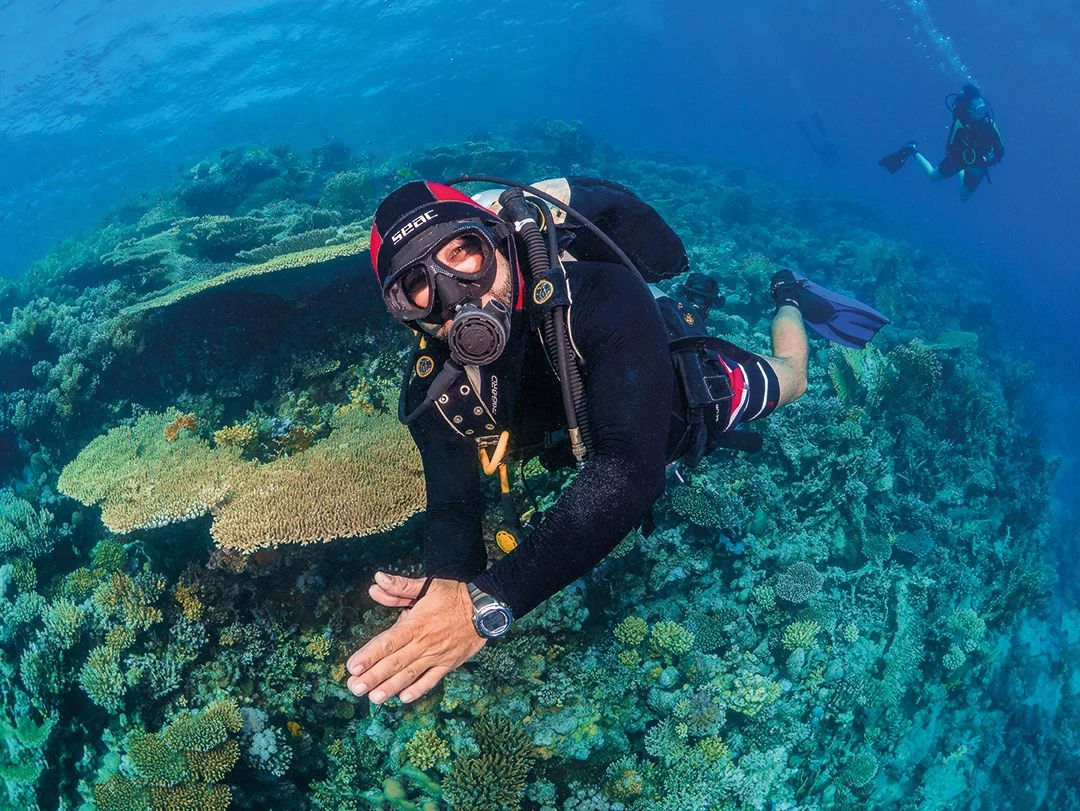
They also nearly all tend to be run very similarly, so that on a certain day there’s a bunch of boats from different fleets all at a dive site at similar times, even sometimes extending to a greater density of divers at the popular spots if the dive guides on the boats haven’t co-operated and employed some joined-up thinking to stagger the drop-in times.
The history
About five years ago now, a bit of bad weather led to some good fortune, when our boat full of underwater photographers were all on a trip which was basically your regular Wrecks and Reefs Northern Red Sea route, with some photo help and instruction provided by yours truly.
Anyway, it was in early-January and, as it can be sometimes, it was very windy, and our sensible skipper decided to keep us at our safe mooring at Gubal Island until the weather blew over.
Unfortunately, it really wasn’t getting any calmer, so while where we were was dive-able, a lot of the other spots would have been hazardous, and at the very least no fun, and definitely not relaxing.We’d just come from a very dicey Thistlegorm and made the bumpy crossing back, so it looked like we were going to be staying a few days here at the Barge in sheltered conditions according to the wind forecast.
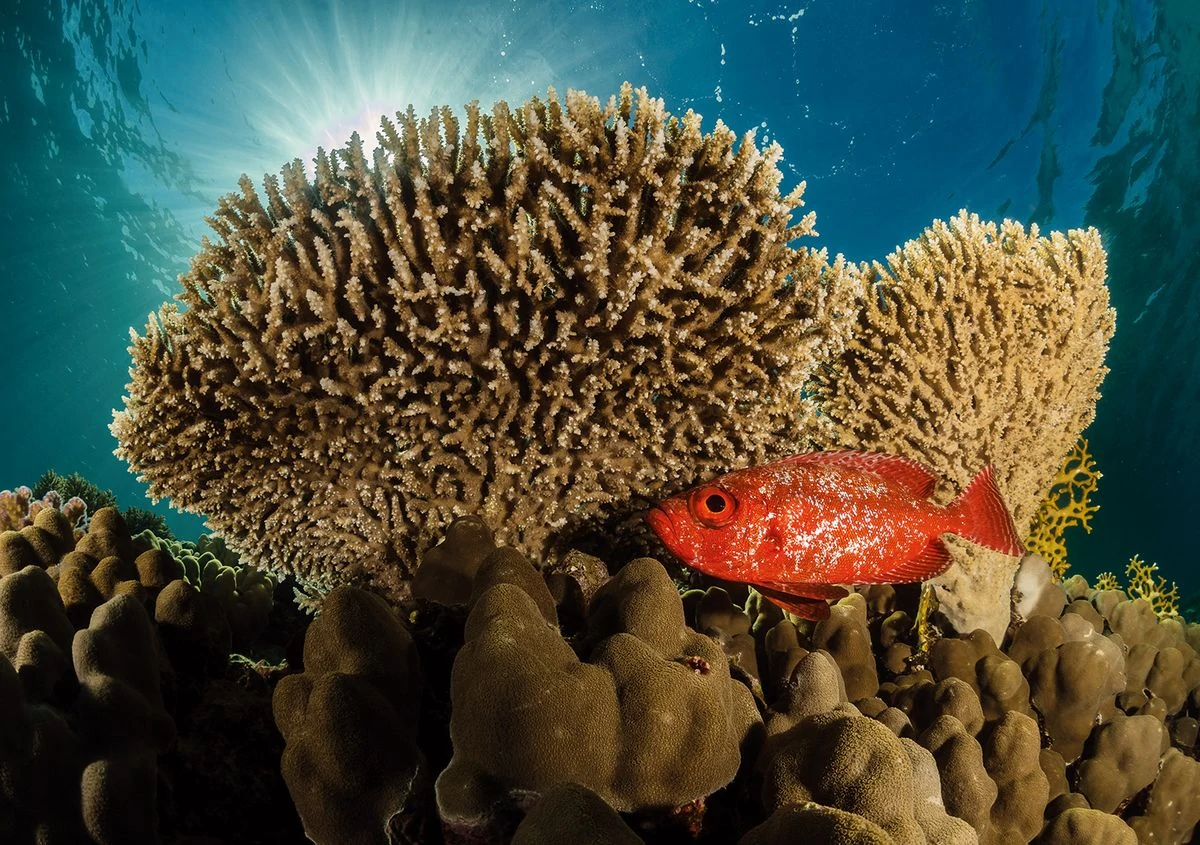
Our guide, a good friend of mine, put forward a plan to help with the inconvenience of enforced diving of the same dive site, and so together we fine-tuned the idea and worked it through.
It was very simple – we would just create a true ‘open deck’, allowing people to dive when they wanted, from dawn till night time, with unlimited dive times, based upon their own air consumption. We trusted the divers onboard to observe sensible surface intervals and deco limits.
We would also allow them use of the RIBs to either pick them up or drop them off, within a safe radius of the Barge itself, which is the centrepiece of the area, and which we were moored atop of.
This allowed a great deal of diversity and different diving opportunities, as the area is quite large, but more importantly it allowed those who wanted an easier life – not fancying getting on and off RIBs – a great chance to just plop in at their leisure from the back of the boat if they wished.
A lot of people don’t like RIB diving, I’ve found, so it’s great to be able to offer an alternative to those not fancying the indignities of getting hauled aboard an inflatable, and so it meant that everybody had a choice, and a say in how and when they wanted to dive.
It was a great success, and even when the weather abated enough to move on, they fairly unanimously voted to stay on an extra day loving the greater freedom and the chilled-out atmosphere that ‘open deck’ diving brought with it.
And then nearly two thirds of them decided to repeat the trip the following year if we indulged them again with the ‘open deck’ that they’d grown to love.
The following year it was so successful I ran the same trip twice, once at the end of January and then at the end of February, so it became a fixture in my calendar, with the company I worked for even copyrighting the name of the trip, along with a summer variant I had also put in my schedule.
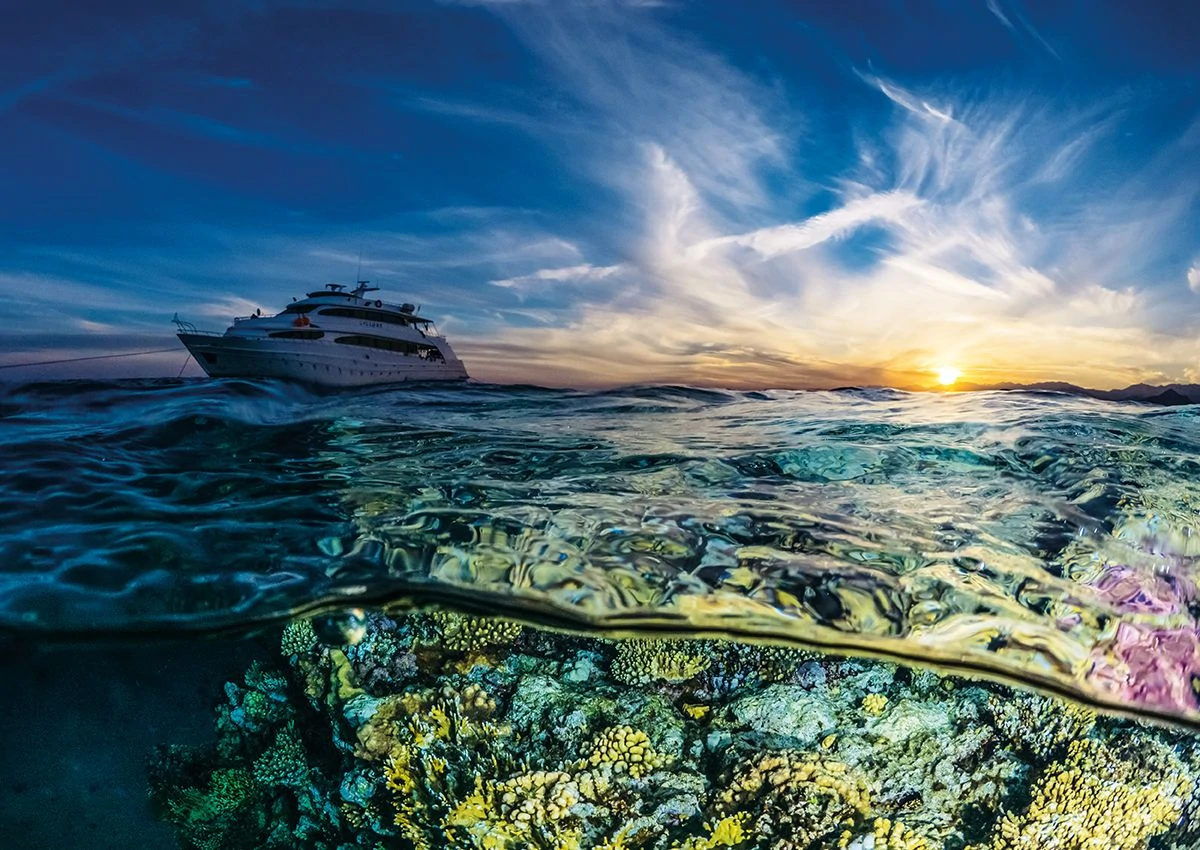
The BTS story
Behind the scenes, this free and easygoing trip, like a lot of things actually, had to be run quite carefully and with an attention to detail if everything wasn’t to descend into anarchy and chaos.
I know of a couple of trips that decided to emulate this format and came unstuck because they thought that it would be a doddle, however they quickly realised that you need to know your onions, and work with the crews, skippers and guides on the boats if all is to go swimmingly.
You can’t just turn up and assume that the boat team will do your bidding, and you need to be sensitive to their needs, and consult with them about your plans.
A lot think that it must be an easier trip for a crew, when in fact the opposite is true. On a regular itinerary the crew all know that the bell will ring for dives at certain times, and that there will be gaps when most are in the water, so that they can fit in their own food and of course their prayer times.
If we are all coming and going randomly, tank filling becomes more of a chore too, as now you need to keep a much-closer eye on who is full and empty, rather than filling all enmasse while we are eating or between dives. So this usually requires an extra deck engineer to spread the load and so they can take it in shifts with the fills.
All the simple stuff like cleaning the boat and cabins, etc, has to be fitted in around our freedoms, and so it’s worth bearing this in mind.
There has to be rules
If we just had a free-for-all then anarchy would ensue and no doubt the beleaguered crew would have every right to down tools. So we have to have a system to make this all work well, and above all it has to be safe. I’ve run over 25 trips like this now, and we have it down pat.
First and foremost, you have to let us know when you enter the water with your buddy, recording the time, and a rough ETA of how long you think you’ll be, and taking your name off the white board when you get back onboard.
We normally set the first time to be allowed to enter the water from dawn, or just before, and then the final entry time at dinner time at night.
And between these times you’re allowed up to four dives, of course observing safe surface intervals and we trust you to not push the limits. So far, no one has let us down, I find that if you trust people, they will endeavour to live up that trust.
Breakfast, lunch and dinner is at fixed times each day, and if you want to dive over those times then that’s entirely up to you, but don’t assume that you will automatically be fed, as the poor chef isn’t providing a personal service.
However, it’s unlikely that you’ll starve on your average liveaboard, there’s always snacks and biscuits to hand.
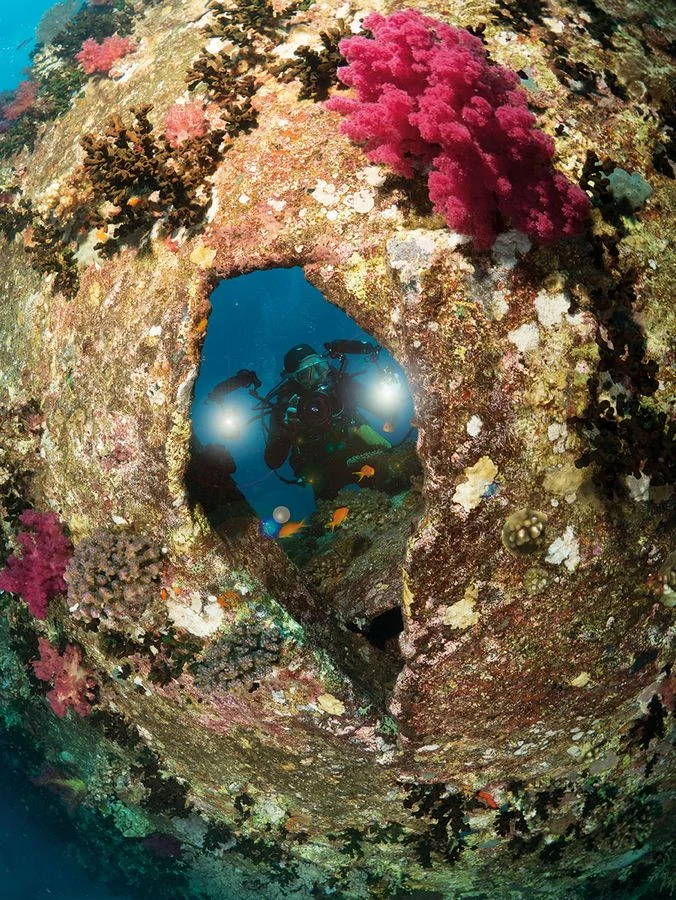
Big advantages
This style of diving has big advantages, not least of which you can wake up when you want, either having a leisurely lie in and an extra-long post-breakfast dive, probably with few others around, or get up extra early and get in as the sun is just warming the horizon, witnessing that exciting time as the reef wakes up.
As a photographer diving multiple times at a site will reap dividends, as you can revisit spots and sometimes, especially at sites like the Barge, you’ll even see the same creatures multiple times a day, allowing you options to perfect your shots, staying in-situ for as long as you’d like.
If you’re a newbie then these trips are also a boon, as you’ll mostly have the opportunity to either partner with someone that you can learn from on an easy, unhurried dive, or get one of the dive guides to show you around at a pace that suits you.
And as I mentioned earlier, these trips are very popular with those that aren’t keen on bumpy RIB rides and inelegant entries and exits.
The Barge at Gubal Island is our most popular ‘open deck’ site, but weather, time of year and conditions allowing, I can implement the same scenario at a number of other popular locations, so rather than seeing everywhere in the Northern Red Sea at a furious pace, you’ll have the time to enjoy and savour a dive site, and witness it at various points across the day. Less is most definitely more.
Not just for photographers
While these trips started out being solely the preserve of the underwater photographer, over the years they’ve become popular with any type of diver that would prefer an easier life and the ability to dictate their own daily plans without the Pavlovian response that the bell ringing brings with it on a normal liveaboard.
I'm on hand, of course, to help with any of your underwater photography requirements, and of late have been also doing mini video-editing sessions as everyone and their mate seems to be bringing along a GoPro or something similar.
If you’re a more-serious underwater photographer though, wanting to perfect a technique and not be bothered, just spending time with a subject, then these trips will also deliver the goods. And I’ll still be always available for critiques or photo-editing tuition.
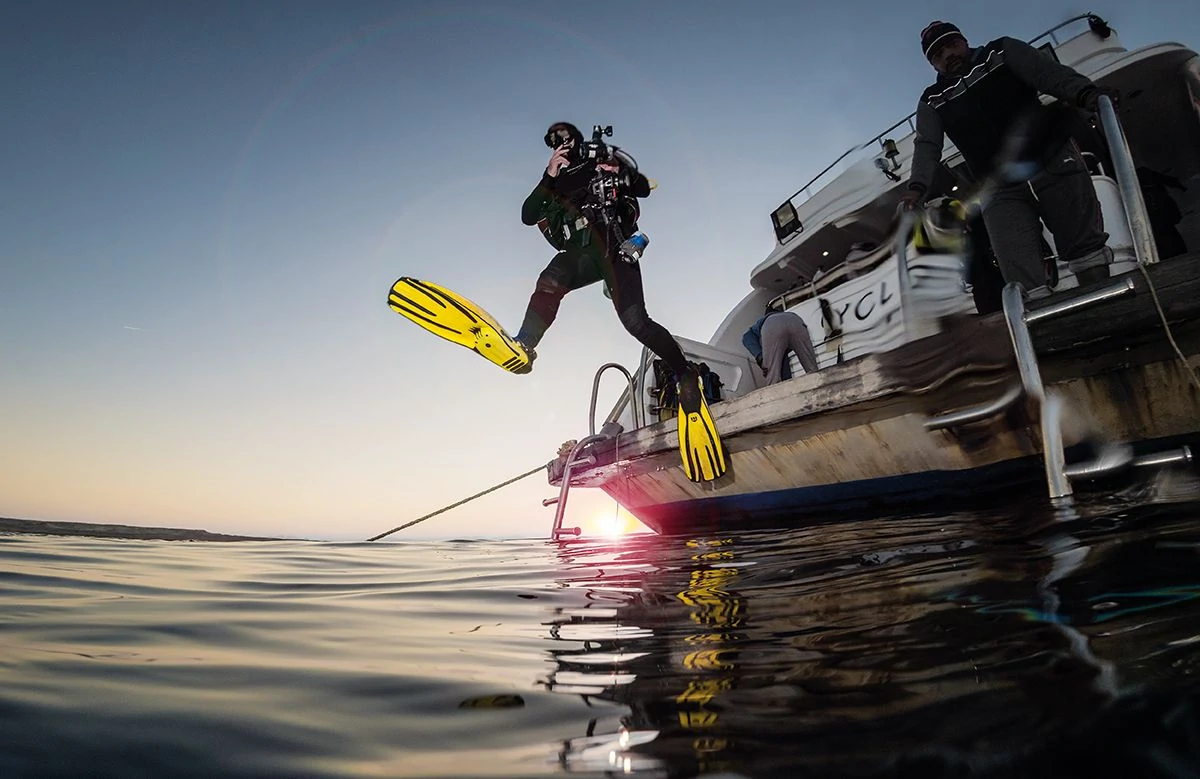
Okay, what about land-based then?
I mentioned at the beginning that I had come back from a two-week trip. My second week was my very first similar land-based Egypt itinerary at the Marsa Shagra location of Red Sea Dive Safari.
I had wanted something that echoed all the major benefits of my liveaboard ‘open decks’ but on land and after extensive research decided upon RSDS, and was aided and abetted by Sarah O’Gorman, Head of Marketing at the resort.
Within half an hour’s transfer from Marsa Alam airport, I was now able to conduct a similar itinerary with the freedom to take charge of your own diving. They have unlimited house reef diving here, and the entry and exits are easy by shore, but you can also opt to take a RIB out to the further reaches of the extensive house reef both north and south of the bay, or Marsa, as it’s known in Arabic.
There are also options to have excursions further afield to Elphinstone, and Marsa Abu Dabbab to see sharks or dugongs, so plenty to keep you occupied, and I hope to do more of these land-based trips in the future as I can see them being very popular.
The food was also of very high liveaboard standards and with flexible breakfast, lunch and dinner times, so you can fit them around your own personalised diving schedule. And I was able to conduct daily photo critiques and tutorials at a room put at my disposal.
You can stay in everything from an air-conditioned chalet with ensuite to a shore-side tent under the stars, something for everyone.
Last word
Whether you prefer a boat-based trip, or the benefits of a land-orientated trip is your thing, there’s no denying the attraction of being in control of your own diving in a safe environment. This way you can mold your holiday in a way you like. And if it’s on one of my itineraries, then you’ll also get the photo tuition as well, so it’s a win-win all round.







